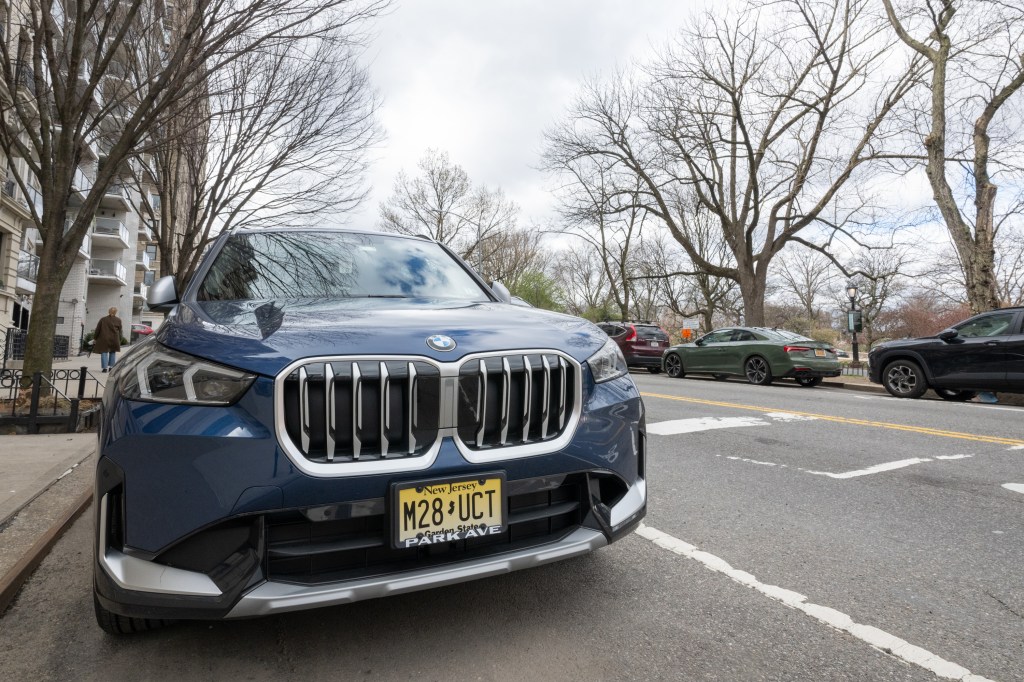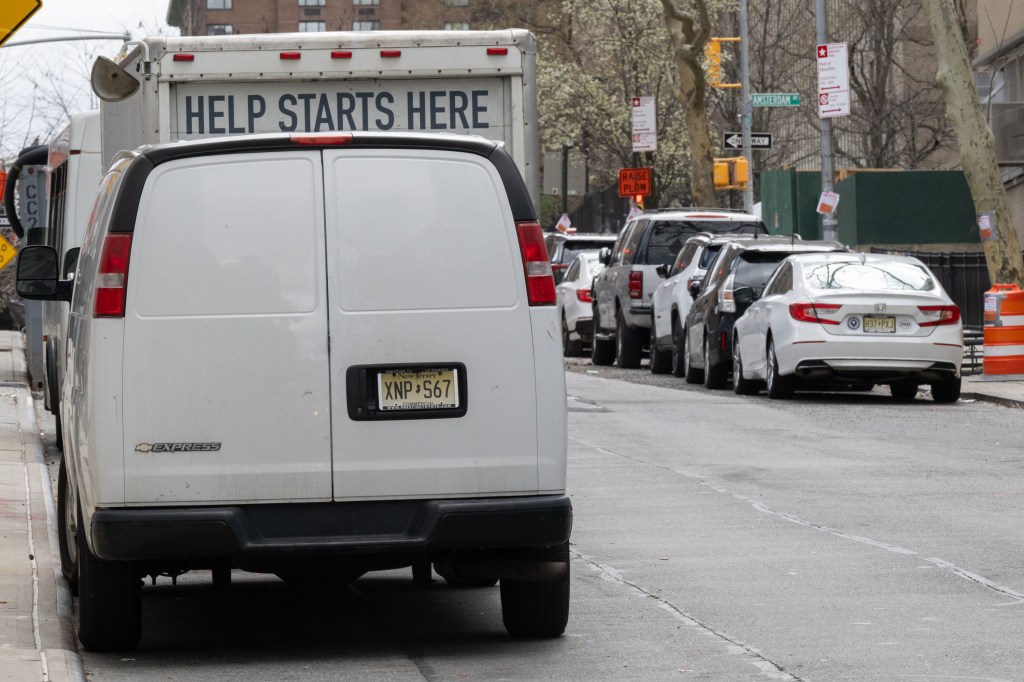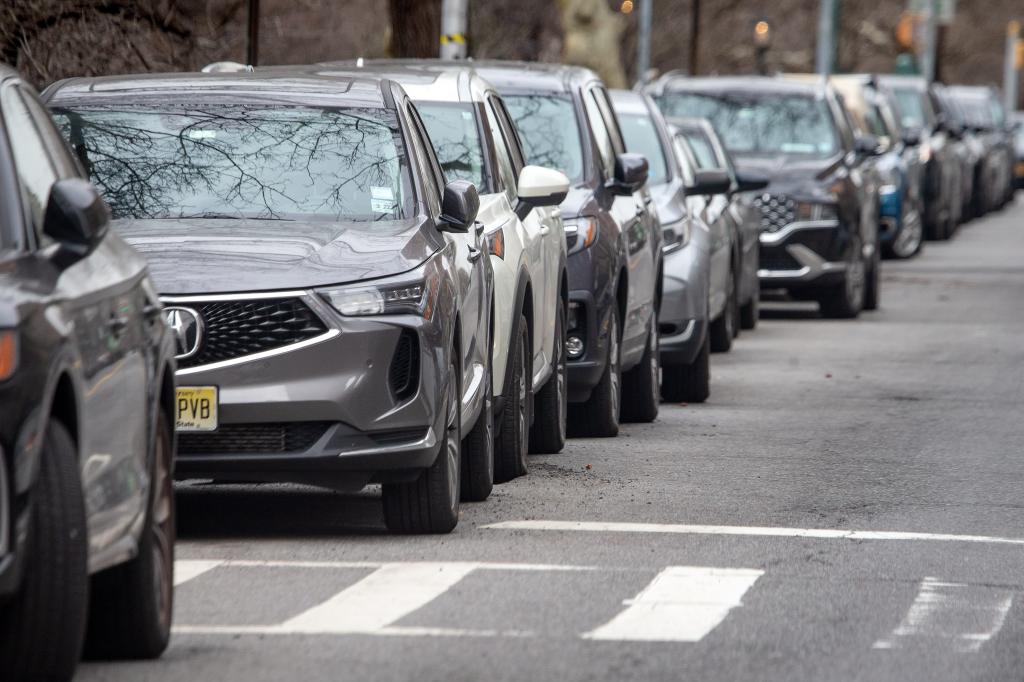NYC’s Upper West Side already becoming commuter parking lot for congestion-pricing evaders
The Upper West Side is about to become a commuter parking lot.
Already notorious for its scarcity of spaces, the parking situation on the UWS has reached new lows of desperation ahead of the mid-June implementation of the Big Apple’s much-maligned, five-years-in-the-making congestion parking plan, which the MTA’s board authorized last month.
“The situation up here is untenable,” said longtime West 79th Street resident Renee Baruch, who’s noticed a steady uptick since January in the number of cars with out-of-state plates circling her block each morning.
“They’re on Riverside Drive, on side streets, with plates from all over, and you’re seeing the same ones every day,” explained Baruch, part of a consortium of Manhattanites that continues to push pols for a parking permitting system.
Congestion pricing imposes a $15 toll on cars traveling anywhere below 60th Street between 5 a.m. and 9 p.m. on weekdays and 9 a.m. to 9 p.m. on weekends.
Overnight, the toll drops to $3.25.
Critics argue the UWS, along with Kew Gardens in Queens and neighborhoods in Staten Island and Brooklyn, will experience a daily influx of non-residents hunting for parking once congestion pricing takes hold.
“Common sense tells you that the Upper West Side, Northern Staten Island and Brooklyn will see increased traffic and pollution as people look to park closest to the zone, then hop on a bus, train or walk to avoid the congestion cash grab,” said Staten Island GOP Rep. Nicole Malliotakis. “It’s not eliminating traffic, it’s just shifting it around.”
Malliotakis has joined a lawsuit seeking to halt congestion pricing that was first filed by Staten Island Borough President Vito Fossella along with seven teachers from New York and New Jersey.
On two recent weekday mornings, The Post watched as some 40 commuters from the Garden and Nutmeg States parallel-parked along Riverside Drive from W. 85th Street to 72nd Street before hoofing it to the nearby subway.
A reporter spoke to more than half of them, to ask why they’ve been using the UWS as a Park-and-Ride and for how long.
Thinking the first-of-its-kind $15 toll was already in effect, Andre, a restaurant worker from Danbury, Conn., spoke to a cousin, who said there was ample parking available on the UWS. “I also needed to get a feel for the competition.”
Raul Sanchez, a handyman from Paramus, N.J., parked his car along Riverside Drive near W. 76th Street, and made a beeline for Broadway and the subway. “This is how I’m handling [congestion pricing],” he explained. “I’m avoiding it” by parking “here.”
Nissan Pathfinder-driving Rudy Vincent, 42, of Fairfield, Conn., used to pay for lot parking.
That stopped last month, when he started leaving his car on the UWS.
“The lot closes early sometimes, and you come back to find your car up in the air,” Vincent said, parking his ride along Riverside Drive near W. 76th Street. “With that toll coming, it was time to try something new.”
Maya Kron, 43, a Teaneck, N.J., acupuncturist, will continue parking her ride on the UWS — for work and visits to her in-laws downtown. “That toll is insane, and this area’s so convenient — so close to the [George Washington] bridge.”
The MTA claims congestion pricing will have zero effect on street-parking availability.
The MTA partnered with the DOT on a study of “parking north and south of 60th Street,” an MTA statement explains. It found there would be “no significant impact” on the UWS “or anywhere else. This is exactly why we do these studies.”
Critics aren’t buying it.
Get all the stories that move New York to your inbox
Sign up for our Metro Daily newsletter!
Thanks for signing up!
“That is beyond dumb,” said Councilman Robert Holden. “You don’t have to be a rocket scientist to figure this out: if you are going to charge people $15 to go below 60th, those people will look for alternatives.”
Fossella said Staten Island will also be overrun by out-of-state commuters who work in Manhattan.
He noted the MTA’s own “padded” 4,000-page environmental impact assessment “verifies traffic will increase on Staten Island and that air pollution will get worse. To say it will have no impact is nonsense.”
Even Manhattan Borough President Mark Levine, who championed congestion pricing, acknowledged “suburban commuters” will be “dumping cars” not only on the UWS, but neighborhoods in Brooklyn, Queens and Staten Island.
And he said “it’s going to get worse once there’s a charge at 60th Street — no doubt about it.”
“He’s hedging his bets,” said Holden. “He tailors his message to whoever he’s speaking to.”
Councilwoman Lynn Shulman (D-Forest Hills) has been part of a six-year push to launch a residential permit parking pilot program in Kew Gardens, preventing Long Island commuters from invading the streets around the Long Island Rail Road station.
There is “still work to do” to pass the bill funding the project, Shulman said. “The residents really wanted this, so they’re excited. The revenue could be used for street safety.”
For Steve Anderson, president of the UWS Coalition of Block Associations and Community Groups, what the MTA is doing in June makes no sense, and he’s furious MTA officials didn’t consult residents on the plan. “In our effort to reduce congestion in the central business district, we’re going to allow increased congestion in our neighborhoods, in our communities?”











